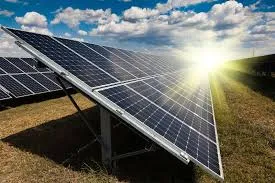solar cell efficiency
Understanding Solar Cell Efficiency A Key to Sustainable Energy
As the world grapples with the pressing challenges posed by climate change and the need for sustainable energy solutions, solar energy has emerged as a leading contender in the renewable energy race. At the heart of this shift is the efficiency of solar cells, the critical components that capture sunlight and convert it into usable electricity. Understanding solar cell efficiency is paramount for maximizing the potential of solar energy and fostering a cleaner, more sustainable future.
What is Solar Cell Efficiency?
Solar cell efficiency refers to the percentage of sunlight that a solar cell can convert into electrical energy. This metric is crucial because it determines how much power can be generated from a given area of solar panels. Higher efficiency means more electricity generated from less space, making solar technology more viable in areas where land is limited.
The efficiency of solar cells can vary widely depending on the technology used. Traditional silicon-based solar cells, which dominate the market, typically have efficiencies ranging from 15% to 22%. However, high-performance variants, such as monocrystalline silicon cells, can reach efficiencies above 25%. Additionally, emerging technologies, including perovskite solar cells, have shown promise in laboratory settings, achieving efficiencies exceeding 29%.
Factors Affecting Solar Cell Efficiency
Several factors influence the efficiency of solar cells. Material quality is pivotal; higher purity materials tend to yield better performance. The cell design and structure also play a crucial role, as innovative configurations can minimize energy losses. For instance, bifacial panels, which capture sunlight from both sides, can increase overall energy capture.
Temperature affects efficiency as well; solar cells typically perform best at cooler temperatures. Consequently, effective thermal management and installation in cooler climates can enhance performance. Additionally, light spectrum and the angle of incidence, or the angle at which sunlight hits the panel, are critical. Panels are most efficient when the sun’s rays strike them perpendicularly.
The Importance of Solar Cell Efficiency
solar cell efficiency

Improving solar cell efficiency is vital for several reasons
. First, it directly impacts the cost-effectiveness of solar energy. Higher efficiency means that fewer panels are needed to produce the same amount of energy, which can lower installation costs and increase accessibility to solar technology.Moreover, efficiency plays a crucial role in addressing energy demands, especially in urban areas where space is at a premium. As cities strive to mitigate their carbon footprints and transition to clean energy sources, installing highly efficient solar panels can significantly enhance energy generation without necessitating vast swathes of land.
Innovations in Solar Cell Technology
Recent advancements in technology are pushing the boundaries of solar cell efficiency. Researchers are innovating with new materials, such as perovskites, which have shown remarkable efficiency and flexibility, making them suitable for a broader range of applications. Multi-junction solar cells, which layer different materials to capture varying wavelengths of sunlight, are another promising route, enabling efficiencies that surpass traditional single-junction cells.
Moreover, there’s a growing trend towards integrating solar technology into building materials, such as solar roof tiles and windows. These innovations not only enhance aesthetics but also enable buildings to generate their own power, showcasing how efficient solar design can be seamlessly incorporated into daily life.
The Future of Solar Cell Efficiency
Looking ahead, the future of solar cell efficiency appears bright. With ongoing research and investment, the potential for further advancements is substantial. As efficiency improves, costs are expected to decline, making solar energy more accessible and appealing than ever before.
Government policies and incentives are also crucial in this evolution. By supporting research and development and providing incentives for installing efficient solar systems, governments can play a pivotal role in advancing solar technology.
In conclusion, solar cell efficiency is a critical factor in the transition to renewable energy. As efficiency continues to improve, the potential for solar energy to meet a significant portion of the world’s electricity needs grows exponentially. Harnessing this clean, sustainable resource is not just an option—it is a necessity for a sustainable future. Investing in solar energy and advancing technology will lead the way toward a greener, more resilient world.
-
Navigating Off Grid Solar Inverter: From Use Cases to Trusted PartnersNewsAug.05,2025
-
Solar Edge String Inverter: A Wholesaler’s Guide to Inverter Technology SelectionNewsAug.05,2025
-
Microinverters: Revolutionizing Solar Energy UseNewsAug.05,2025
-
Future of Monocrystalline Solar Panel Efficiency: Latest Technological AdvancesNewsAug.05,2025
-
Solar Panels for House: A Complete Guide to Residential Solar EnergyNewsAug.05,2025
-
Panel Bifacial Performance in Snow and Low-Light ConditionsNewsAug.05,2025







